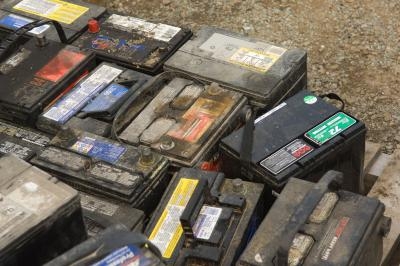
Nearly all renewable energy systems rely on a battery to provide power when the natural energy being harvested is not sufficient to keep the system running effectively; this can be exemplified by a photoelectric cell on a cloudy day. Determining the appropriate size of battery required for the setup is essential to keep it functioning properly. The system may not be able to keep it fully charged if the battery is too large, and if it is too small, it will not be able to support the load required of it.
Determine how much energy will be consumed from the system each day. Add up the loads that are drawing energy, such as appliances and electronics. You may have to refer to each product's manual or call the manufacturer for this task. The final total should be given in Watt-hours.
Determine the number of days of autonomy you intend to have for the unit, or in other words, how many days you want the battery to be able to run the system without being charged. For example, a solar system cannot recharge its battery on cloudy days. Multiply the number of days of autonomy by your Watt-hours per day results.
Decide on the depth of discharge, or DoD you want for your battery. The DoD is a percentage of how much you will allow the battery to discharge in comparison to full capacity. The more you let a battery discharge, the shorter its life will be. Change this percentage into a decimal and divide it by the results in Step 2.
Find the minimum Watts per hour capacity of the battery. To do this, determine the lowest average temperature the battery will experience in its environment and look up its temperature factor on a battery temperature chart. Multiply this factor from the results of Step 3.
Divide the results from Step 4 by the system's voltage. The system's voltage is generally 12V, 24V or 48V. If you are unsure, contact the manufacturer or contractor who installed your energy system. The final result, expressed in Amp-hours, is the minimum required capacity for your battery.